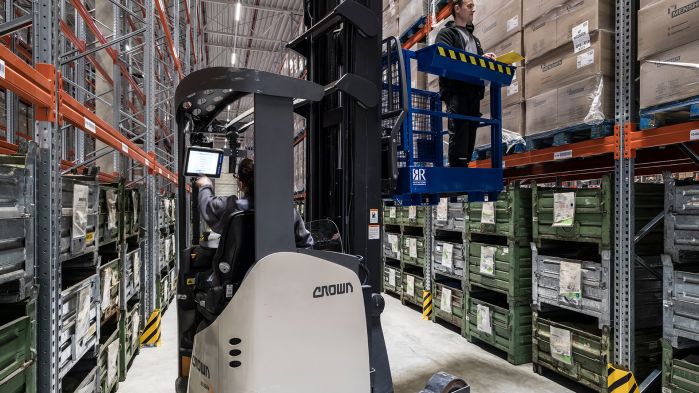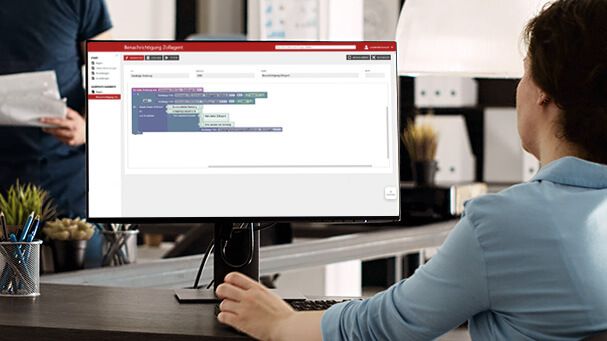Logistics is the most mobile of all industries. On the way from the product to the user, logistics services are an elementary component of the value chains of all companies from trade to industry. To coordinate these tasks, logistics service providers use mobile data terminals (MDT) everywhere: for data collection, order control and status communication. But who manages actually the devices, protects their data, and keeps them operational? Software solutions for mobile device management control the devices and are the anchor point of enterprise mobility management.
Quiz question – if you work in a logistics company: How many MDE devices and barcode scanners does your company use? If you have to think about this for longer, we are already in the middle of the topic. Managing mobile technology is a costly and complex task. RFID and label printers, MDE, barcode readers or hand-held scanners for QR and barcodes do not only want to be well maintained in order to be ready for use at any time. Their use must also be secure in order to comply with legal regulations, such as the General Data Protection Regulation (DSGVO), at all times. A range of requirements that goes far beyond the acquisition and maintenance of the devices.
Clarification of terms: What are EMM, MDM, MAM, and Co?
What are the benefits of software solutions and operating models in the area of mobile devices? This becomes clear from the workflows that are part of their management. A look at the common terms helps. After all, as corporate resources, mobile devices are subject to strict guidelines: they must enable the protection of corporate data against theft and unauthorised access and, at the same time, they must be usable for data collection and communication at any location and always be ready for use. The term Enterprise Mobility Management (EMM) has become established for these tasks. It encompasses all processes for controlling all mobile devices of a company and also their applications, contents, e-mails, and identities. Separate terms have been established for the individual tasks of EMM, which delimit the field of application:
- MDM (Mobile Device Management) for the management of devices
- MAM (Mobile Application Management) for controlling the software used
- MCM (Mobile Content Management) to restrict mobile content sharing
- MEM (Mobile Email Management) for policy-compliant email delivery
- IDM (Identity Management) for login and authentication processes via the devices
In all these sub-areas, responsible handling is an important prerequisite for the use of mobile devices in companies.
When asked the initial question, could you spontaneously say how many barcode scanners and MDE devices you have in your company? If not, you probably have an idea of the effort involved in procuring and commissioning the devices alone: Inventory, installation of the company applications and configuration are, after all, part of the rollout and deployment of each individual device. Later, software updates, regular charging, and battery maintenance follow, as does maintenance to preserve the value. These are the areas where the strengths of software solutions for mobile device management apply. They register the devices and manage them centrally from then on. As a superordinate application, MDM also controls the areas of application described above: identity management, applications, content, and emails. It protects the devices against unauthorised access and can prevent data theft even from private devices if they are integrated into the MDM solution according to the bring-your-own-device (BYOD) principle. In addition, the software also monitors the technical condition of the devices, including battery life and charge status. In this way, it ensures that, for example, there are enough barcode scanners ready for use in the handling hall every day – without a company needing too many spare devices.
In view of the great advantages that mobile devices offer in logistics, Enterprise Mobility Management and Mobile Device Management have almost become mandatory tasks for service providers. In distribution logistics, the devices in local transport fleets with fifty vehicles and more can otherwise hardly be managed concisely or regularly provided with security updates. Mobile label printers are indispensable everywhere in the large halls of contract logistics. The barcode scanners in transshipment facilities are under heavy physical strain in day-to-day business. That is why more and more system houses and service providers are offering the procurement, administration, maintenance, and care of the devices as a complete package: Mobile-Device-as-a-Service (MDaaS).



